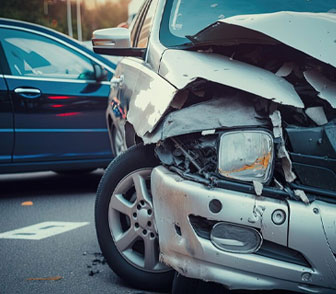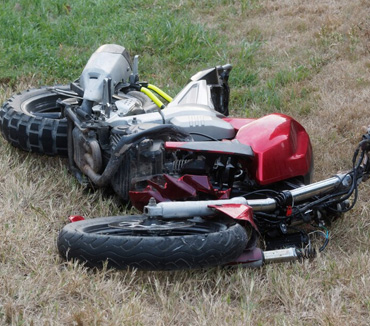Who Is At Fault For Rear-End Collisions?
Rear-end collisions are the most common motor vehicle accident type. In fact, they account for almost one-third of all collisions in the US. Rear-end collisions are commonly known as fender benders, making people less likely to take them seriously. Some rear-end collisions, however, result in catastrophic injuries with lifelong consequences.
Rear-end collisions typically occur at stoplights and stop signs, during rush hour traffic, and during weather conditions that make the roads more hazardous. Determining who is at fault for this type of car accident is not always easy.
You should always take any accident and injury seriously and discuss your compensation options with a car accident lawyer immediately.
Causes
Even if you take all necessary precautions when driving, a collision that comes from behind is very difficult to avoid in many cases.
- Speeding: Speeding reduces the reaction time, making it harder to stop suddenly when the car in front has stopped.
- Tailgating: Safe drivers should allow at least three seconds for stopping if the front vehicle should stop suddenly. More stopping time should be allowed for bad weather, bad road conditions, or poor visibility.
- Distracted Driving: Any time the driver’s attention is diverted to things like texting, eating, talking with passengers, looking into the back seat to check on young children, etc., the likelihood that a rear-end collision can happen is dramatically raised.
- DUI: Drugs and alcohol significantly compromise a driver’s reflexes and reaction time. Intoxicated drivers do not accurately judge distance or speed.
- Weather: Rain, snow, icy roads, strong winds and fog can affect a driver’s ability to see ahead, stop in time, and stay within the lane. Extra caution should be taken when weather conditions affect vision.
- Sudden Stops: Drivers can abruptly stop for many reasons, like to avoid hitting a child or animal, because of road conditions, an accident up ahead, police activity or construction.
Fault
Drivers are negligent when they do not act reasonably and injuries result. First, you must prove to the insurance company that the rear driver owed you a duty of care, which all drivers owe each other.
The breach of duty must cause the accident, and lastly, you suffer injuries and damages from the collision. Each case is different, and establishing these elements is easier in some than others. Once your lawyer can prove these four elements, you can request compensation.
Once you establish this, you must demonstrate a breach of that duty by the driver’s actions, including:
- Not paying attention to the cars in front of them
- Speeding
- Losing control of the vehicle
- Tailgating
- Failing to yield the right of way
- Driving too fast for weather or road conditions
Multi-Car Accidents
The rear driver usually causes these accidents. However, your claim is contingent on the concept of negligence, and you must prove what the driver did wrong to hold them liable for your losses.
In most cases, the lead driver followed traffic rules, and the trailing driver crashed into them. The police will likely automatically cite the rear driver, but your local car accident lawyer must have evidence the driver was negligent to obtain compensation for your damages.
When multiple parties are in a rear-end collision, liability is a difficult issue. The rear vehicle that started the chain reaction is likely liable, but the cars in the middle might also share some liability.
A reasonable and prudent distance between two cars can be measured in two ways:
- The driver behind should maintain a distance of one car length for every 10 miles per hour of speed.
- The driver should keep far enough behind the car in front so that if they must stop suddenly, they will have at least two seconds to react before hitting the car in front of them.
When is the Lead Driver at Fault?
Since drivers are obligated to follow vehicles at a safe distance, a rear-end collision is often blamed on the rear driver—but there are a few exceptions when the lead driver shares fault or is completely to blame.
A “safe distance” can mean different things in different road conditions, including traffic speed and weather conditions. That is why it is possible for the leading vehicle to share the blame in the event of a rear-end collision, especially in the following conditions:
- The lead car’s brake lights are not working properly
- The lead driver “brake checks” the tailing car
- The lead car has an obvious issue but continues to drive without hazard lights or pulling over
- The lead driver merged without providing enough space
- The lead driver was driving recklessly or while under the influence
Proving Your Rear-End Accident Claim
It may seem obvious to you that the driver who hit you from behind caused the accident. But you cannot necessarily count on that to win your case. All drivers have a legal duty of care to drive safely. This means drivers must follow local traffic laws, maintain a proper lookout for other drivers and pedestrians, and keep their cars in working order.
When a driver violates their duty of care, it’s often due to their negligence. A rear-end collision can happen when someone stops paying attention, drives recklessly, or has a brake failure from neglecting to have the brake fluid checked. These are all negligent actions.
To meet your burden of proof, you must gather as much evidence as possible. The more evidence you have, the better your chances are. Let’s look at some of the best evidence for a rear-end auto accident claim.
Evidence at the Scene
Always call 911 when you are involved in a traffic accident. In busy cities, police may not be able to respond to minor, non-injury fender-benders but it is still important to show that you contacted the police.
If you are physically able, gather evidence while waiting for police:
- Photographs: Use your phone to take photos and video. Start with pictures of your vehicle, the rear vehicle, and the surrounding area. Take as many pictures, from as many angles as you safely can. Take close-ups and wide shots to include traffic signs, stoplights, and other information in context with the accident.
- Detailed Notes: After the accident, make detailed notes about what happened before, during, and after you were rear-ended. Be sure to include anything the other driver may have said to you.
- Witness Statements: Write down the names and contact information of anyone who saw the accident. If you find willing witnesses, have them write down everything they saw and heard. Ask them to sign and date their written statement.
- Police Report: If the police respond to the accident, an officer will investigate the accident and prepare an official police accident report. The report will indicate the investigating officer’s opinion of fault for the crash, list any citations issued to the other driver, and if the other driver was arrested for DUI.
- Medical Records: Your medical bills and records are crucial evidence proving the rear-end collision injured you, and how badly.
Seeking Compensation After a Rear-End Crash
Once your attorney reviews your situation and identifies the liable parties, it is time to file claims to seek compensation for your losses. You might have a claim against a single driver or multiple claims against different parties. You might file claims against two or more drivers, a driver’s employer, construction crews, municipalities, and more, depending on the cause of your rear-end crash.
When you receive a settlement offer from an insurance company, never accept it without legal advice and guidance. Once you accept an offer, there is no going back.
Should You Speak with an Attorney?
In most lawsuits involving a rear-end collision, the rear driver will more than likely receive some portion of fault in the final determination. The logic behind this rule is that any driver who is behind another driver should be paying enough attention to react to changes on the road, and should be leaving a reasonable amount of space between his or her own vehicle and the vehicle ahead.
Thousands of people are injured or die in car accidents each year, which is why the damage sustained in these crashes should never be taken lightly. If you were harmed in a rear-end crash, your first step should always be to call 911 and ask for medical attention. Once you have been properly taken care of, make sure you contact an experienced personal injury attorney for help attaining justice and compensation for your injuries.
Call us now at 1-877-241-9554 to learn more about your options. A free consultation is just a phone call away.
Request A
Free Consultation
Fields Marked With An ” *” Are Required










